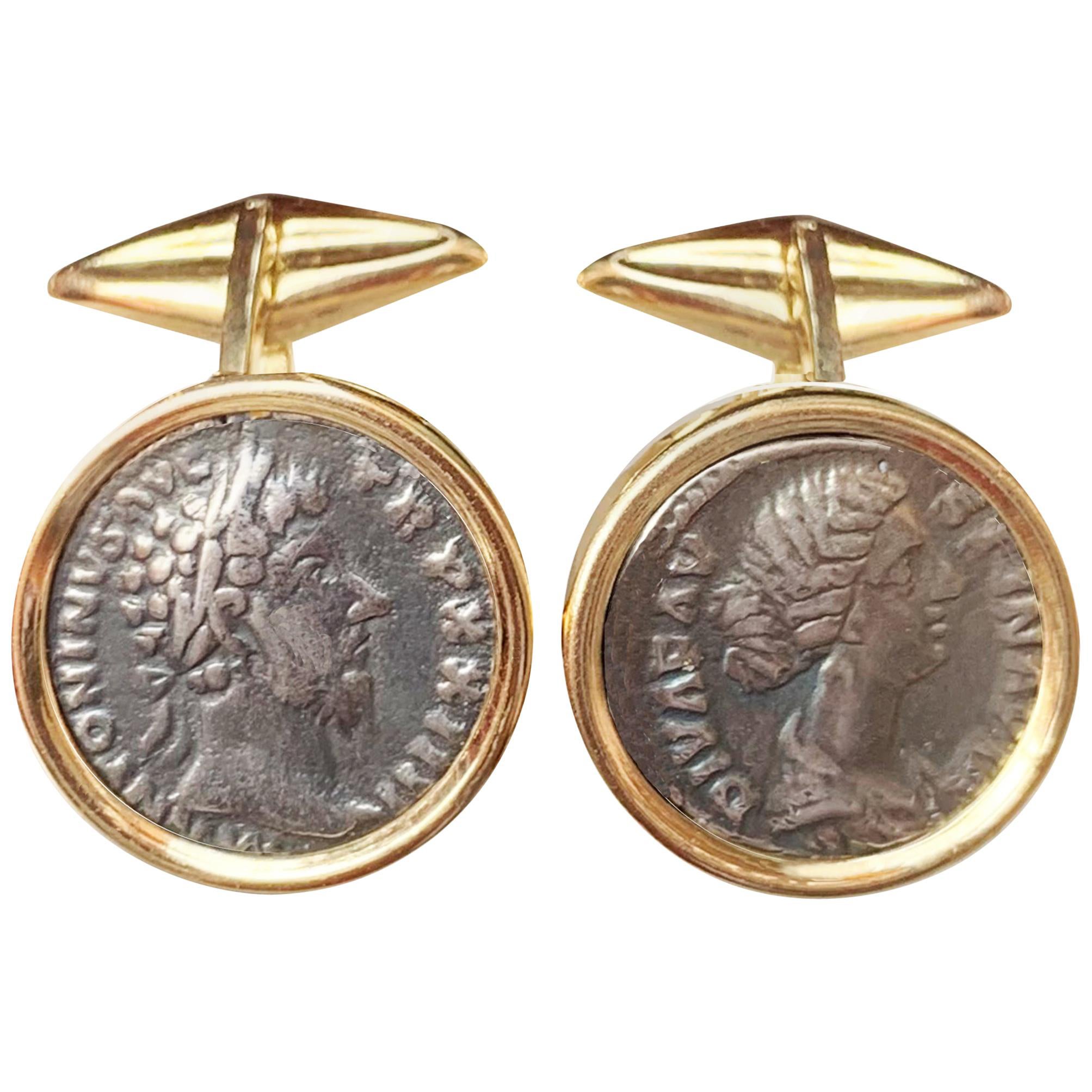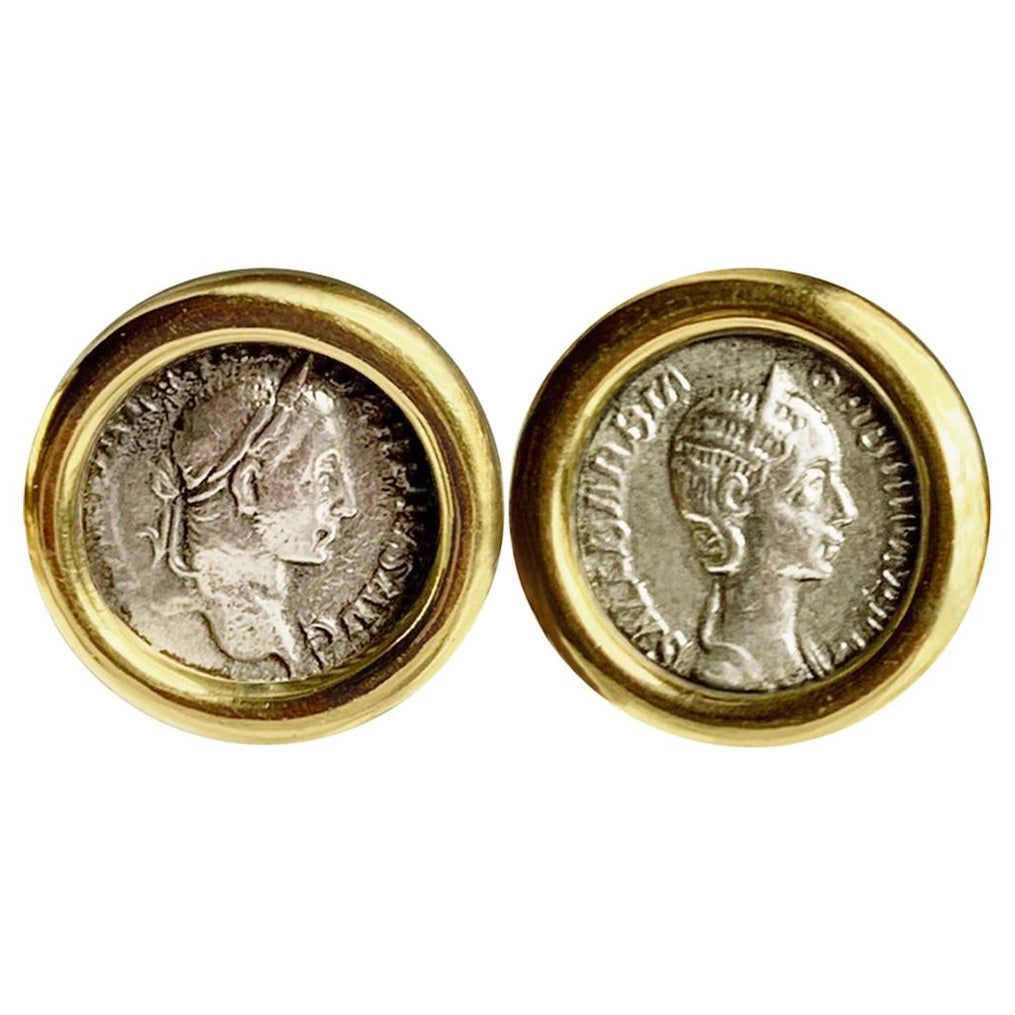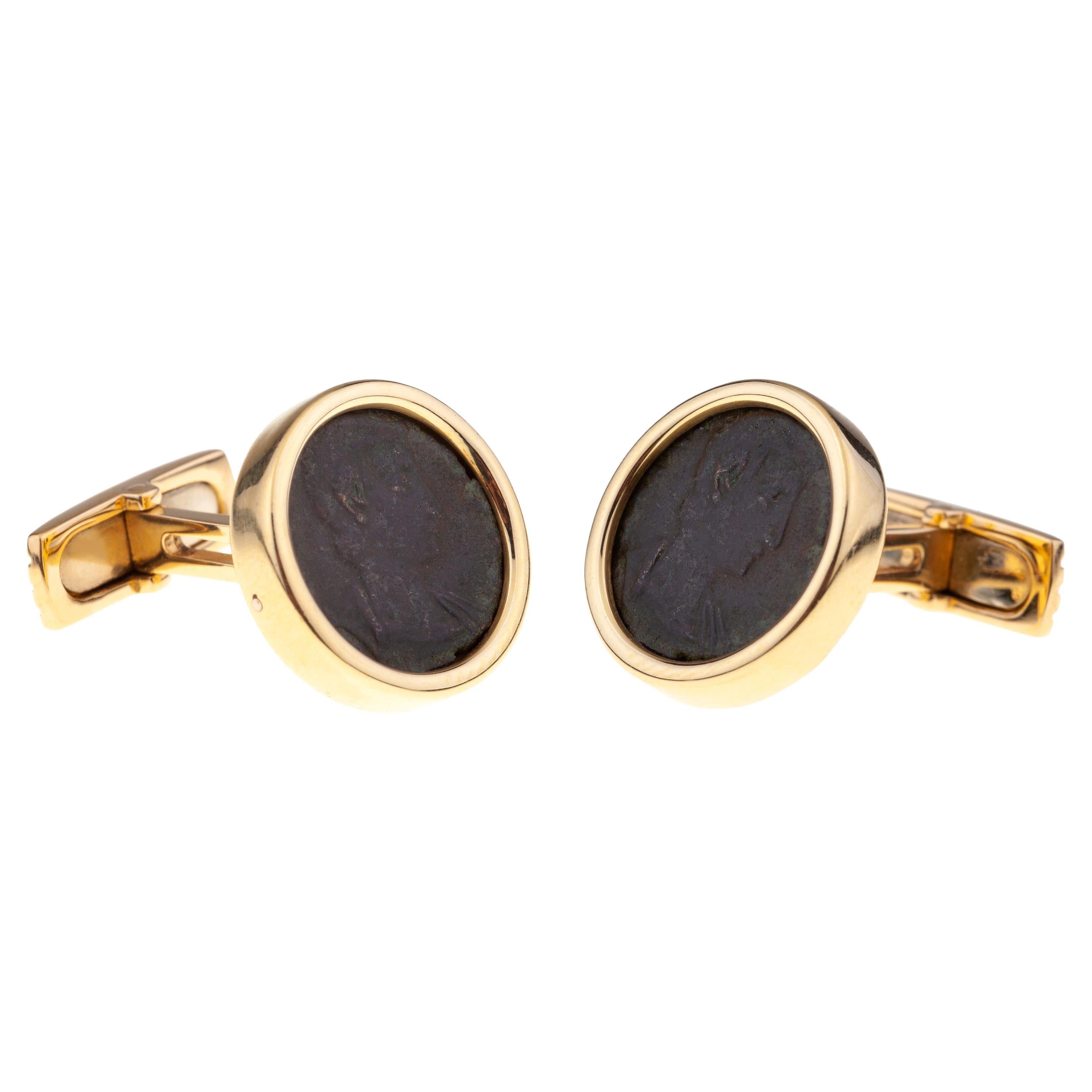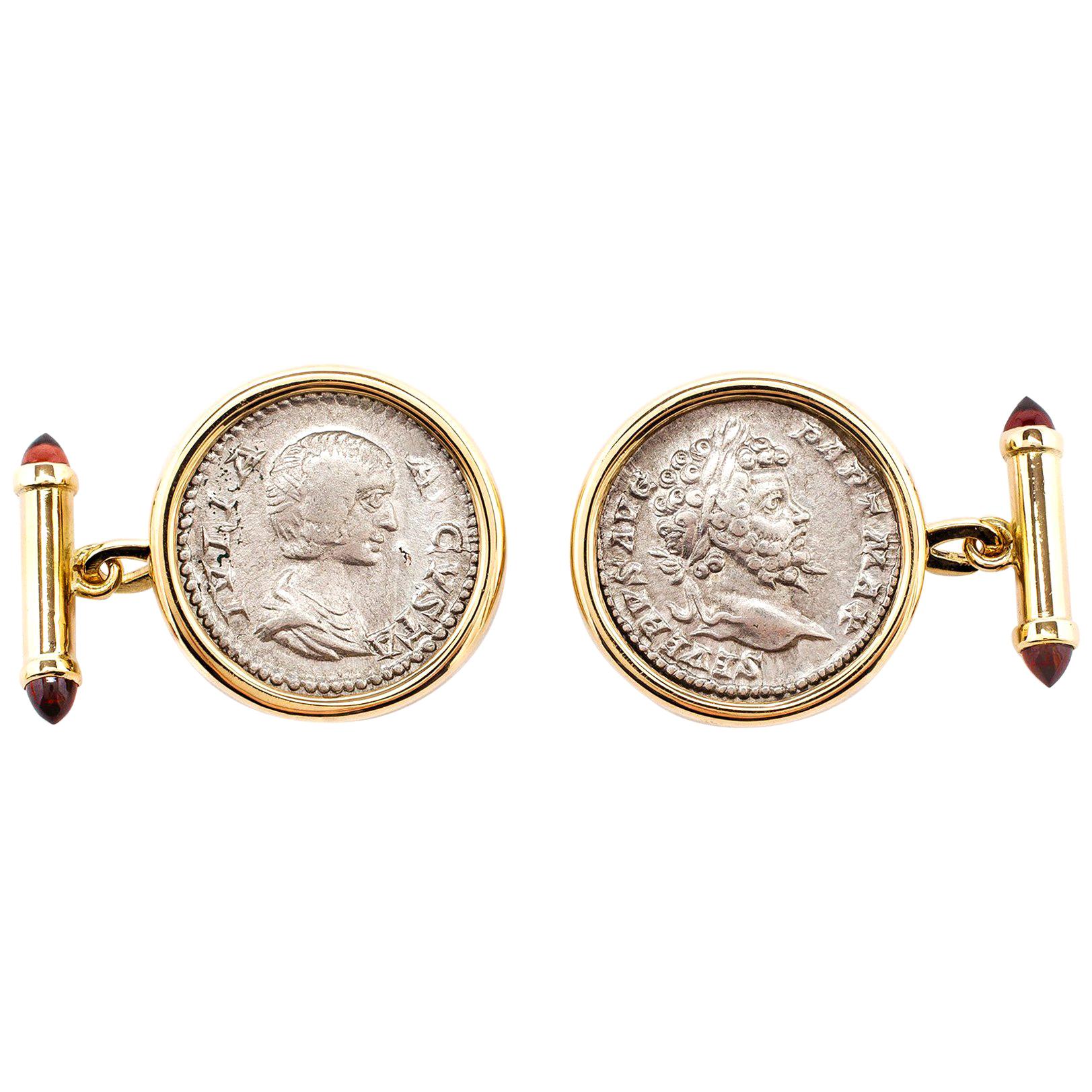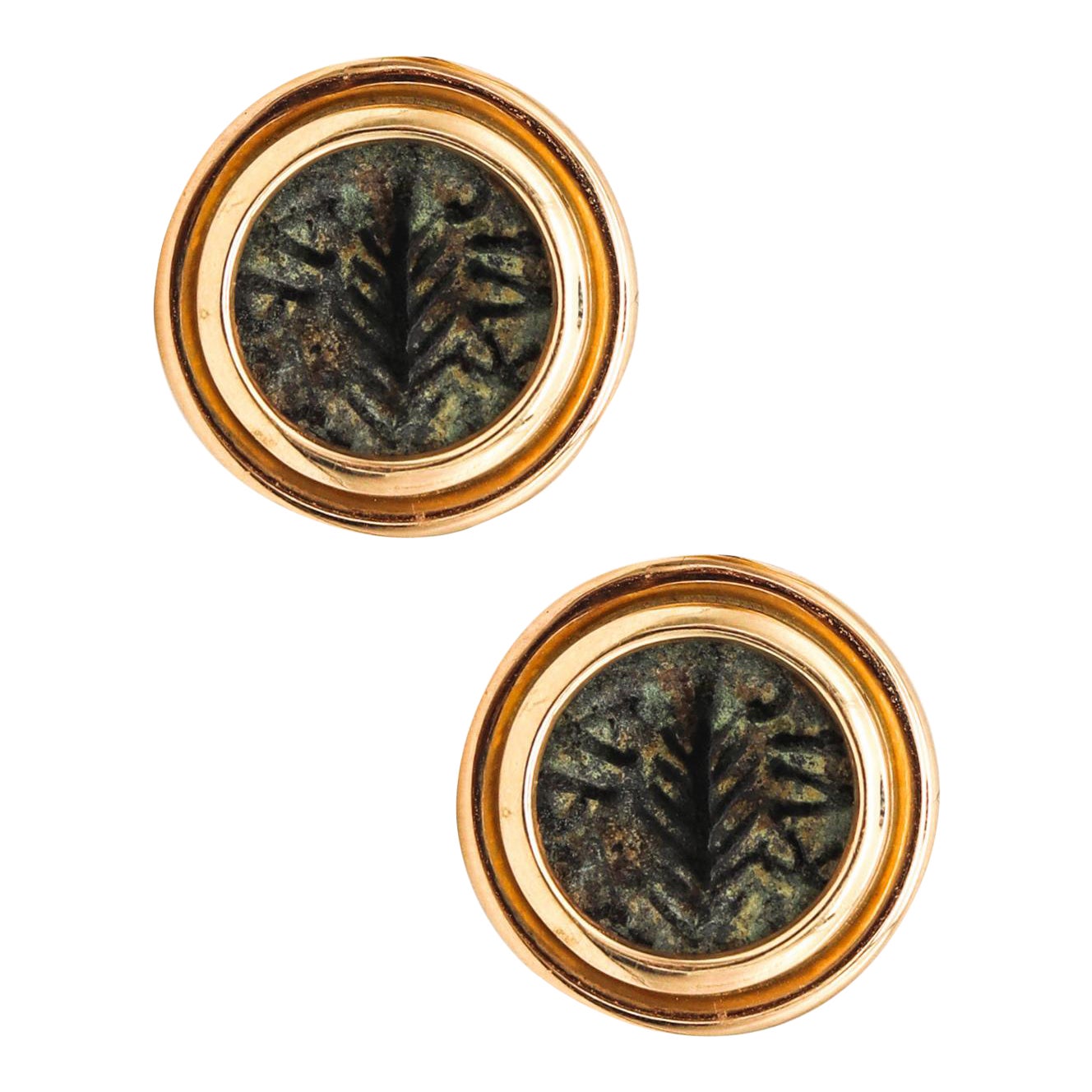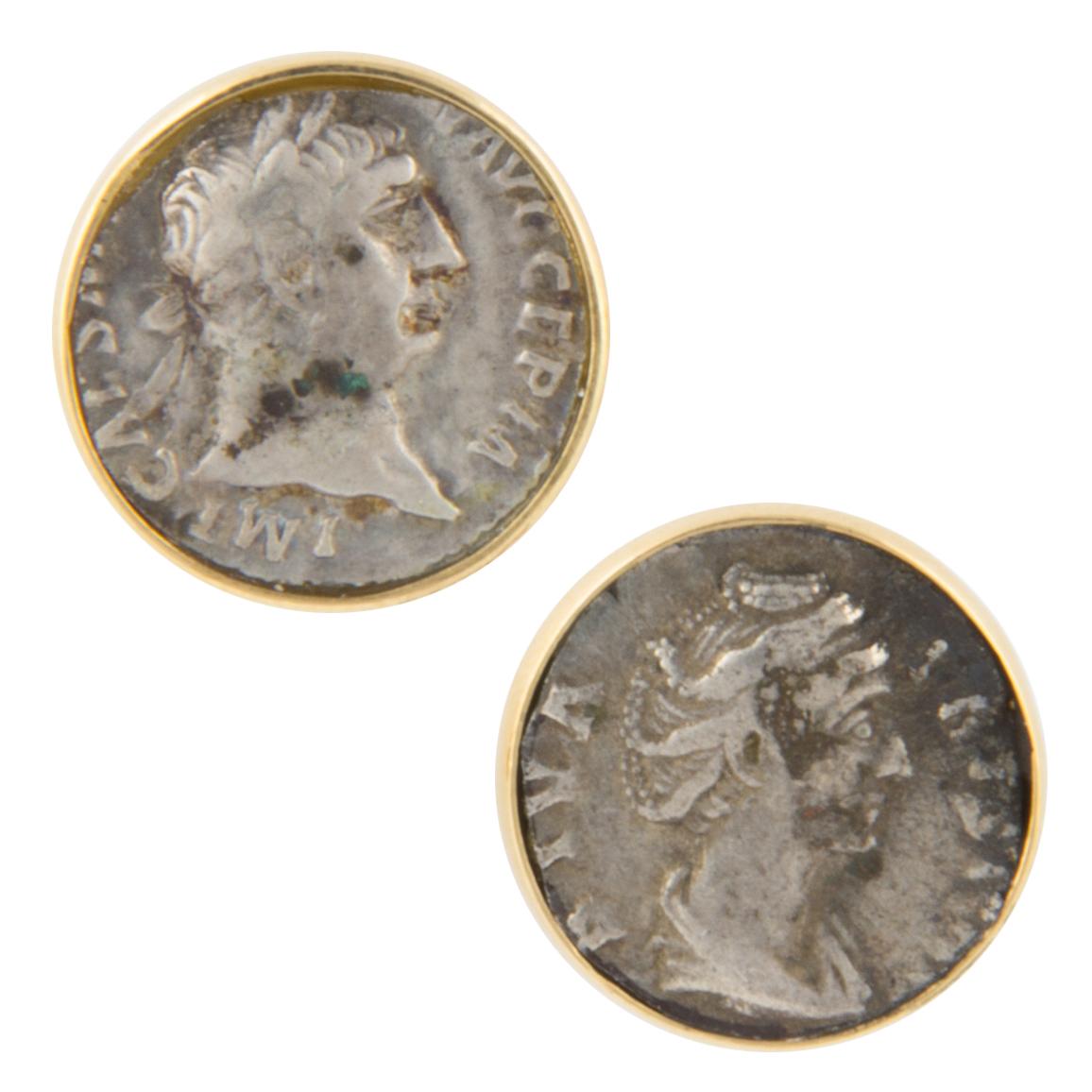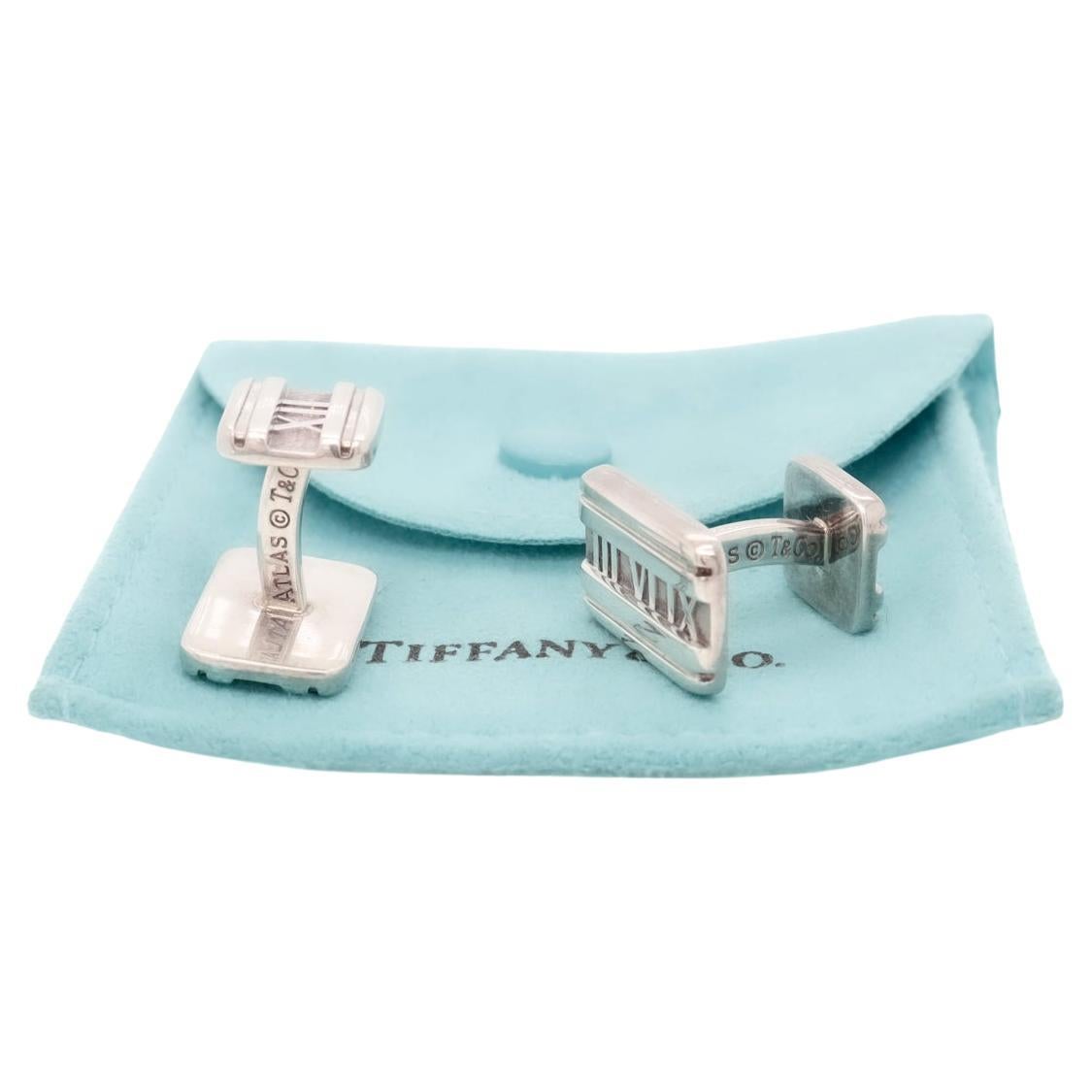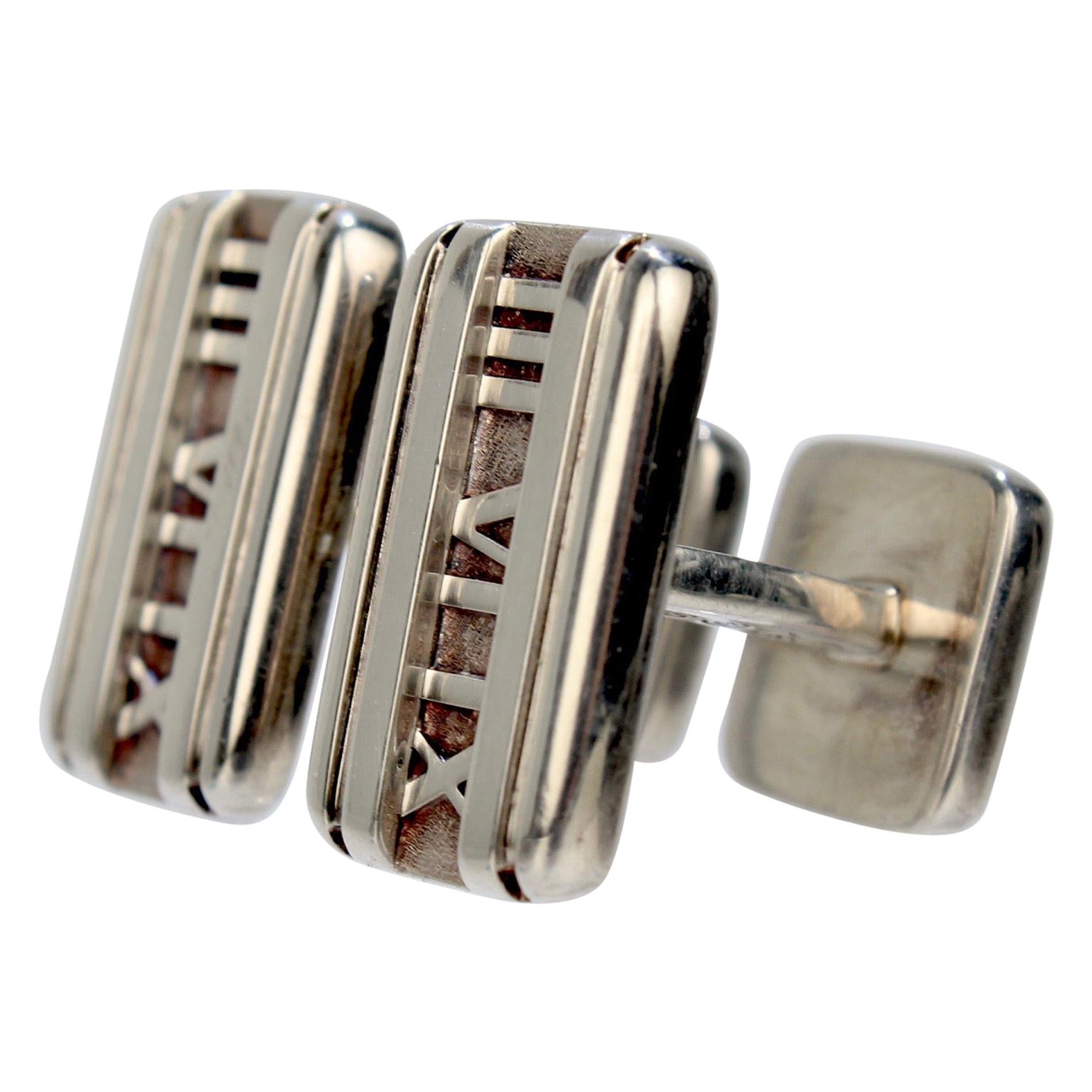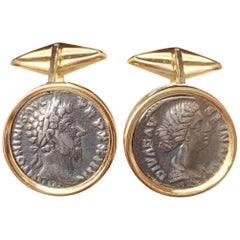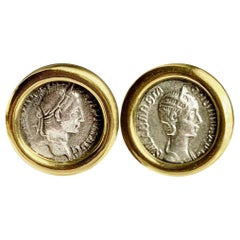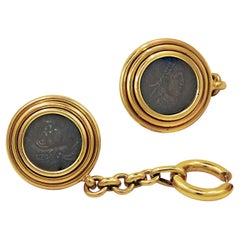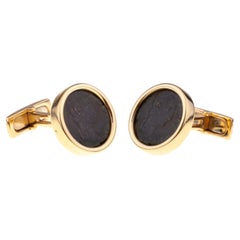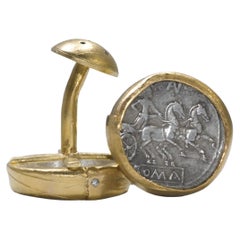
Roman Coins Cufflinks Depicting Emperor Trajan and His Wife Plotina '1 Cent.AD'
View Similar Items
Video Loading
Want more images or videos?
Request additional images or videos from the seller
1 of 8
Roman Coins Cufflinks Depicting Emperor Trajan and His Wife Plotina '1 Cent.AD'
About the Item
- Creator:SERRA
- Metal:Sterling Silver
- Dimensions:Diameter: 0.79 in (20 mm)
- Style:Classical Roman
- Period:2010-
- Date of Manufacture:2022
- Condition:
- Seller Location:Roma, IT
- Reference Number:1stDibs: LU1922215793212
About the Seller
5.0
Vetted Seller
These experienced sellers undergo a comprehensive evaluation by our team of in-house experts.
1stDibs seller since 2020
34 sales on 1stDibs
Typical response time: 4 hours
More From This SellerView All
- Roman Coin 2nd Cent. AD Pendant w/black diamonds depicting Emperor TrajanLocated in Roma, ITThis exquisite silver pendant showcases a genuine Roman silver denarius coin dating back to the 2nd century AD, depicting Emperor Trajan on its front and God Mars on the reverse. Acc...Category
Antique 15th Century and Earlier Italian Classical Roman Pendant Necklaces
MaterialsBlack Diamond, Silver
- Marcus Aurelius and Faustina Roman Coin 2nd Cent.AD 18 Kt Gold CufflinksLocated in Roma, ITIn these cufflinks two authentic Roman Silver Denarius depicting Emperor Marcus Aurelius and his wife Faustina are set Marcus Aurelius was a Roman emperor from 161 to 180 and a Stoic philosopher. He was the last of the rulers known as the Five Good Emperors, and the last emperor of the Pax Romana, an age of relative peace and stability for the Roman Empire. He served as Roman consul in 140, 145, and 161. Marcus was born during the reign of Hadrian to the emperor's nephew, the praetor Marcus Annius Verus (III), and his wife, the heiress Domitia Lucilla. Following the death of his father, Marcus was raised by his mother and grandfather, Marcus Annius Verus. After Hadrian's adoptive son, Aelius Caesar, died in 138, the emperor adopted Marcus' uncle Antoninus Pius as his new heir. In turn, Antoninus adopted Marcus and the son of Aelius, Lucius (later to rule as Emperor Lucius Verus alongside Marcus). Hadrian died that year and Antoninus became emperor. Now heir to the throne, Marcus studied Greek and Latin under tutors such as Herodes Atticus and Marcus Cornelius Fronto. He kept in close correspondence with Fronto for many years afterwards. Marcus married Antoninus' daughter Faustina in 145. Antoninus died following an illness in 161. Annia Galeria Faustina Minor , or Faustina the Younger was a daughter of Roman Emperor Antoninus Pius and Roman Empress...Category
Antique 15th Century and Earlier Italian Classical Roman Cufflinks
Materials18k Gold, Silver
- Roman Coins Gold Cufflinks Depicting Emp. Alexander Severus and His Wife OrbianaLocated in Roma, ITIn these 18 kt gold cufflinks authentic roman coins ( silver denarius-3th century A.D.) depicting Emperor Alexander Severus and his wife Orbiana...Category
2010s Italian Classical Roman Cufflinks
MaterialsGold, 18k Gold
- Ancient Roman Coin 2nd Cent. AD Pendant w/sapphires depicting Emperor HadrianLocated in Roma, ITThis sterling silver pendant holds an authentic Roman coin dating back to the 2nd century AD, depicting Emperor Hadrian, surrounded by 16 Sapphires. The reverse side showcases the go...Category
Antique 15th Century and Earlier Italian Classical Roman Pendant Necklaces
MaterialsSapphire, Silver
- Emperor Hadrian Roman Coin 2nd Cent. AD Silver BraceletLocated in Roma, IT
An authentic Roman silver denarius from the 2nd century AD, depicting the Emperor Hadrian, has been set in this sterling silver bracelet, handmade by our goldsmiths. On the side, ...
CategoryAntique 15th Century and Earlier Italian Classical Roman Chain Bracelets
MaterialsSterling Silver
- Emperor Hadrian Roman Coin 2nd Cent. AD Sterling Silver BraceletLocated in Roma, ITAn authentic silver denarius from the 2nd century AD depicting the emperor Hadrian has been set in this solid sterling silver bracelet. On the reverse side of the coin we can see Con...Category
Antique 15th Century and Earlier Italian Classical Roman Chain Bracelets
MaterialsSterling Silver
You May Also Like
- Bulgari Rome Vintage 1970s Ancient Roman Emperor Coin Gold CufflinksBy BulgariLocated in New York, NYBulgari Rome Vintage 1970s Ancient Roman Emperor Coin Gold Cufflinks An 18k yellow gold cufflinks, set with Roma Constantivs II 335-361 AD Dimensions appr...Category
Vintage 1970s Italian Cufflinks
MaterialsGold
- Cufflinks Round 18kt Gold with Roman CoinsBy AngelettiLocated in Roma, ITCufflinks Round 18kt Gold with Roman Coins. Cufflinks for Men for Business or Leisure Time to be worn on any Cuff of both Elegant and Casual Shirt. The coin is set on gold and the we...Category
2010s Italian Contemporary Cufflinks
MaterialsGold, 18k Gold
- Silver Roman Coins 22-21 Karat Gold Cufflinks with Diamonds Cufflinks 18 KaratBy AB Jewelry NYCLocated in New York, NYCoin cufflinks. Antique 2nd Cent BC Roman coins set in 21k gold bezels, styled with small diamond accents. Contemporary jewelry design by AB Jewelry NYC. Bold and masculine while in...Category
21st Century and Contemporary American Contemporary Cufflinks
MaterialsDiamond, Yellow Diamond, Brown Diamond, Gold, 22k Gold, Yellow Gold, Silver
$7,250 / setFree Shipping - Dubini Hadrian Roman Ancient Silver Denarius Coin Garnet 18k Gold CufflinksBy DUBINILocated in London, GBThese DUBINI coin cufflinks from the 'Empires' collection feature authentic Roman Imperial coins minted circa A.D. 133-135 set in 18K yellow gold with garnet...Category
21st Century and Contemporary Italian Classical Roman Cufflinks
MaterialsGarnet, 18k Gold, Silver
$6,311 / setFree Shipping - Dubini Empires Roman Ancient Silver Denarius Coin Garnet 18K Gold CufflinksBy DUBINILocated in London, GBThese DUBINI coin cufflinks from the 'Empires' collection feature authentic Roman Imperial silver coins minted circa 210 - 211 A.D set in 18K yellow gold with garnet bullet cabochons...Category
21st Century and Contemporary Italian Classical Roman Cufflinks
MaterialsGarnet, Silver, 18k Gold
- Ancient Rome Judaea 58 AD Bronze Prutah Coins Cufflinks in 14Kt Yellow GoldLocated in Miami, FLCufflinks with ancient Roman coins from Judaea. Great pair of rare ancient Judean (Jerusalem) coins minted during the period of the Roman Empire administration. These bronze coins were called Prutah and were minted in the city of Jerusalem around 58-59 AD. Cradled in the name of the Roman procurator Porcio Festo (59-62 AD) under the rule of Emperor Nero (54-68 AD). These genuine coins was carefully mounted in an elaborated cufflinks with double frames crafted in solid yellow gold of 14 karats with polished finish and fitted with movable hinged pressured T-bars for comfort fit. Obverse: Greek letters KAICAPOC (Caesar) and date LЄ (year 5=58/59 A.D), palm branch. Reverse: Greek letters NЄP WNO C (Nero) in wreath tied at the bottom with an X. Mint: Roman mint at Jerusalem. Numismatic Literature: Hendin-1351 (5th Edition); Hendin-653 (3rd Edition). Weight: Total of 17.8 Grams, (11.41 Dwt). Coins are approximate 2.45 Grams each. Measurements: 21.6 mm by 21.6 mm (0.85 x 0.85 Inches). Hallmarks: Stamped with the maker's mark and the 14kt gold assay mark. Porcius Festus was procurator of Judea from about AD 58 to 62, succeeding Antonius Felix. His exact time in office is not known. He inherited all of the problems of his predecessor in regard to the Roman practice of creating civic privileges for Jews. Only one other issue bedeviled his administration, the controversy between Agrippa II and the priests in Jerusalem regarding the wall erected at the temple to break the view of the new wing of Agrippa's palace. During his administration, Jewish hostility to Rome was greatly inflamed by the civic privileges issue. Feelings were aroused which played an important part in the closely following Jewish War of AD 66. In the New Testament, the Apostle Paul had his final hearing before Festus. In Acts 25:12, Festus sought to induce Paul to go to Jerusalem for trial; Paul appealed to the Emperor. the appeal resulted in Paul being deported to Rome in the autumn of AD 58. Acts 25-26. Nero (Latin: Nero Claudius Caesar Augustus Germanicus;15 December 37 - 9 June 68) was Roman Emperor from 54 to 68, and the last in the Julio-Claudian dynasty. Nero was adopted by his great uncle Claudius to become his heir and successor, and succeeded to the throne in 54 following Claudius' death. During his reign, Nero focused much of his attention on diplomacy, trade, and enhancing the cultural life of the Empire. He ordered theaters built and promoted athletic games. During his reign, the redoubtable general Corbulo conducted a successful war and negotiated peace with the Parthian Empire. His general Suetonius Paulinus crushed a revolt in Britain. Nero annexed the Bosporan Kingdom to the Empire and began the First Roman-Jewish War. In 64, most of Rome was destroyed in the Great Fire of Rome, which many Romans believed Nero himself had started in order to clear land for his planned palatial complex, the Domus Aurea. In 68, the rebellion of Vindex in Gaul and later the acclamation of Galba in Hispania drove Nero from the throne. Facing assassination, he committed suicide on 9 June 68 (the first Roman emperor to do so) His death ended the Julio-Claudian Dynasty, sparking a brief period of civil wars known as the Year of the Four Emperors. Nero's rule is often associated with tyranny and extravagance. He is known for many executions, including that of his mother, and the probable murder by poison of his stepbrother Britannicus. He is infamously known as the Emperor who "fiddled while Rome burned" and as an early persecutor of Christians. He was known for having captured Christians to burn them in his garden at night for a source of light. This view is based on the writings of Tacitus, Suetonius, and Cassius Dio, the main surviving sources for Nero's reign. Few surviving sources paint Nero in a favorable light. Some sources, though, including some mentioned above, portray him as an emperor who was popular with the common Roman people, especially in the East. Some modern historians question the reliability of ancient sources when reporting on Nero's tyrannical acts. Prutah (Hebrew: פרוטה) is a word borrowed from the Mishnah and the Talmud, in which it means "a coin of smaller value". The word was probably derived originally from an Aramaic word with the same meaning. The prutah was an ancient copper Jewish coin...Category
Late 20th Century Italian Classical Roman Cufflinks
Materials14k Gold, Yellow Gold, Bronze
$1,880 Sale Price20% OffFree Shipping
Recently Viewed
View AllMore Ways To Browse
Greek Soldiers
Roman Coin Cufflinks
Greek Coin Cufflink
Reverse Cufflinks
Diamond Studs And Cufflinks
Chain Link Cufflinks
Tiffany Co Pictures
Sapphire And Diamond Cufflinks
Cufflink Dress Set Studs
Mens Vintage Sterling Silver
Black Onyx And Gold Cufflinks
Gold And Onyx Cufflink Set
Cufflinks To Earrings
Vintage Silver Cufflinks
Designer Gold Cufflinks
Tiffany Jewelry Pictures
Stirrup Jewelry
Cufflinks T Bar
